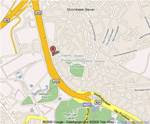 I remember a couple of years ago a colleague of mine at Progress Communications was asked to give a presentation to NGO PR Officers on how public relations and the web could help increase visibility of humanitarian aid organisations. At the time, Fritz Institute had just launched the results of a study called Toward New Understandings: Journalists & Humanitarian Relief Coverage. One of the main issues in the report was that NGO's failed to take advantage of internet-based tools. On the other hand most journalists that were covering humanitarian crises and relief stories were doing so as part of wider news coverage, and did not have the resources nor specific knowledge on the topic. These two conclusions combined, posed a serious challenge to NGO's, as public donation for humanitarian relief strongly depends on media coverage. If a crisis is not covered by the media, financial donations by the public remains very limited.
I remember a couple of years ago a colleague of mine at Progress Communications was asked to give a presentation to NGO PR Officers on how public relations and the web could help increase visibility of humanitarian aid organisations. At the time, Fritz Institute had just launched the results of a study called Toward New Understandings: Journalists & Humanitarian Relief Coverage. One of the main issues in the report was that NGO's failed to take advantage of internet-based tools. On the other hand most journalists that were covering humanitarian crises and relief stories were doing so as part of wider news coverage, and did not have the resources nor specific knowledge on the topic. These two conclusions combined, posed a serious challenge to NGO's, as public donation for humanitarian relief strongly depends on media coverage. If a crisis is not covered by the media, financial donations by the public remains very limited.
Obviously the best way to provide the media with knowledge and information about a crisis, is to take journalists to the disaster area and give them the opportunity to talk to local people and aid workers on the ground. But as journalists tend to have less time to cover stories and the resources to fly journalists into the area are limited, this is always a problem. Thus, the answer was that NGO's make better use of the web for providing as much information as possible to the media and the public. But in practice this was not easy, as knowledge and awareness of web tools within NGO's was not very high. For example, only a couple of NGO officials responded to the question where their web visitors originated from.
Fortunately, a lot has changed since and reading a story this week in PR Week on how the UN uses web tools reminded me of this story. Nowadays, UNHCR has provided refugees with video equipment to document their lifes. It has also put a layer on Google Earth that allows users to zoom in on refugee camps around the world to see photos and videos of the inhabitants. Field workers no use twitter to enable the public to keep up with developments on the ground. And obviously the are using their own channel on Youtube to get videos out to the world.
Great example of how organisations lacking knowledge of the web can totally catch up on how to use social media to their advantage.
1.7.08
How social media aid humanitarian relief
Labels: humanitarian relief, NGO, public relations, social media
Subscribe to:
Post Comments (Atom)

No comments:
Post a Comment